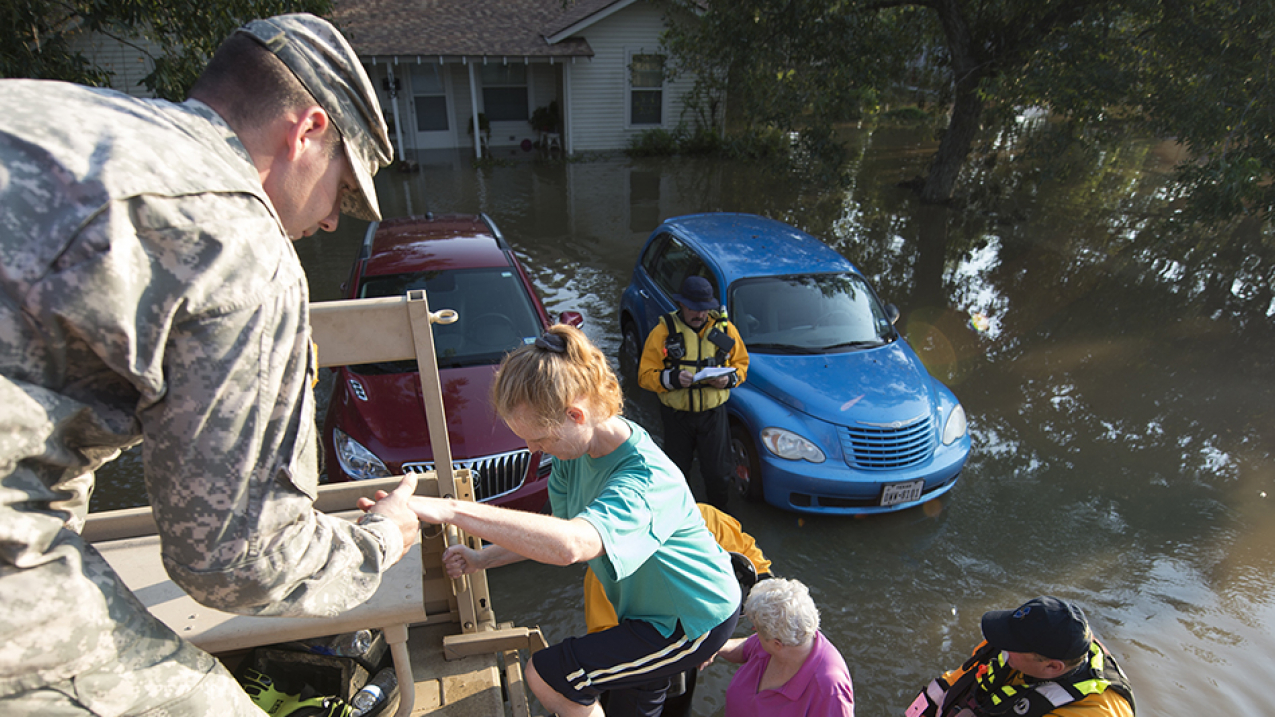Catastrophic flooding from Hurricane Harvey that led to more than 60 deaths and thousands of rescues showed again that an accurate NOAA forecast by itself is not enough to ensure people grasp the risks and make sound decisions that save lives and property.

Staff Sgt. Class Richard Call, of the New Jersey National Guard, and members of New Jersey Task Force 1, assist evacuees in Wharton, Texas, Aug. 31, 2017, due to devastating effects caused by Hurricane Harvey’s aftermath. (Image credit: Photo: Senior Master Sgt. Robert Shelley/U.S. Air National Guard)
A new report released today by the National Academies of Sciences, Engineering and Medicine offsite linkconcludes that realizing the greatest return on investment from significant improvements in weather information will require a better understanding of how individuals, households and communities respond to weather forecasts, watches and warnings.
To do that, NOAA, other public institutions, the private weather industry and academia — collectively called the weather enterprise — will need to embrace social and behavioral research and its application, say authors of the report “Integrating Social and Behavioral Sciences in the Weather Enterprise.”
“The Academies’ report could not come at a better time as we look for how to improve our nation’s preparedness and response to the effects of severe weather,” said Craig McLean, acting NOAA chief scientist.
“We’ve made inroads, but this report lays out a clear roadmap for NOAA and the entire weather enterprise,” said Dr. Louis Uccellini, director of NOAA’s National Weather Service.
NOAA’s National Weather Service and NOAA Research, in fact, have begun to tap into social and behavioral sciences to improve warning products and better understand responders needs — offering storm surge maps, simplifying weather hazard communication and providing tornado warnings that stress impacts.
However, overall efforts across public agencies, academia and private industry in the weather community have been relatively small scale, intermittent, and hampered by inconsistent investment, the report from a panel of experts concludes.
What’s next?
The report makes a number of recommendations, including:
-
We should apply social and behavioral sciences to tackle the dominant cause of weather-related deaths in the United States: vehicle accidents linked to weather. Despite advances in forecasting as well as new vehicle technology, some 6,000 people are killed and more than 445,000 people are injured each year in weather-related vehicle crashes in the U.S. — nine times the number of fatalities of all of the other adverse weather fatalities tracked by the National Weather Service.
-
The ways people get weather information is rapidly changing, from new weather apps and products from private companies. Social and behavioral science can provide insight into how people are using new technologies and how best to take advantage of information to benefit public safety.
-
Finally, the report recommends the public and private sectors of the weather community increase their collaboration on high-priority social science research to improve public safety.
Learn more about NOAA’s social science research strategy [PDF].




